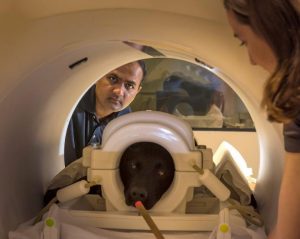As our pets’ quality of living improves, they are living longer. It is not uncommon for cats to live for 20 years now and dogs are not far behind. As a consequence, we are seeing more age-related diseases in pets, such as arthritis, cognitive dysfunction (dementia), cancer and deafness. Strokes are commonly recognised in the human world, but now they are being diagnosed in our beloved pets as well.
A stroke or cerebrovascular accident is a lack of blood supply to part of the brain caused by the rupture of a blood vessel (haemorrhage) or obstruction of a blood vessel (clot).
A stroke can occur due to either of the following:
- a blood vessel ruptures (haemorrhage) or
- a blood vessel becomes obstructed (eg. clot)¹
Clinical signs depend on which blood vessel is affected and which part of the brain is damaged. In small animals a stroke usually presents suddenly with a loss of function to part of the face, side of the body and/or an inability to interact normally. Some strokes are associated with other brain disease such as tumours.²
To diagnose a stroke a thorough veterinary consultation needs to occur first. If a stroke is suspected, an MRI scan is needed for diagnosis. Currently in Launceston MRI scans are not available for animals, however we are able to refer patients to Hobart at MVC. During an MRI scan, your pet has a short 45 minute anaesthetic and the area of interest is scanned. All animal MRI scans done in Tasmania are done on human MRI scanners.
MRI scans are now available in Hobart – our staff can refer your pets for an MRI scan if needed
These diseases can increase the risk of your pet having a stroke:
- High blood pressure
- chronic kidney disease
- hypothyroid & hyperthyroid disease
- diabetes mellitus
- Cushings disease (hyperadrenocorticism)
In over 50% stroke cases however a cause for the stroke is not found.²
High blood pressure, chronic kidney disease, Cushings disease and hyperthyroid disease all increase the risk of a stroke.
There is no specific treatment for a stroke. Any underlying causes should be treated and medication is used to alleviate clinical signs. The outcome depends on where the stroke has occurred. Many animals will improve but can take days to months. Time and intensive nursing are the most important factors in recovery from a stroke.¹
References:
1 – Child, Georgina. “Cardiovascular Disease and Strokes”. Australian Veterinary Association Tasmania Conference Proceedings. 2018.
2 – Laurent S. Garosi. “Advancements in the Diagnosis of Cerebrovascular Disease in Dogs and Cats”. American Conference of Veterinary Internal Medicine. Hertfordshire UK. 2013.
3 – Blenheim Company & Cavalier Health Fund Charitable Trust. “Cerebral Infarcts – Strokes – in the Cavalier King Charles Spaniel”. http://www.cavalierhealth.com/cerebellar_infarcts.htm 2018.
4 – Martin, Charles. “Auburn researchers using ‘awake dog’ MRI scanning to seek neural marker that would predict a dog’s detection ability”. USA. http://ocm.auburn.edu/newsroom/news_articles/2016/01/auburn-researchers-using-awake-dog-mri-scanning-to-seek-neural-marker-that-would-predict-a-dogs-detection-ability.php 2016.


